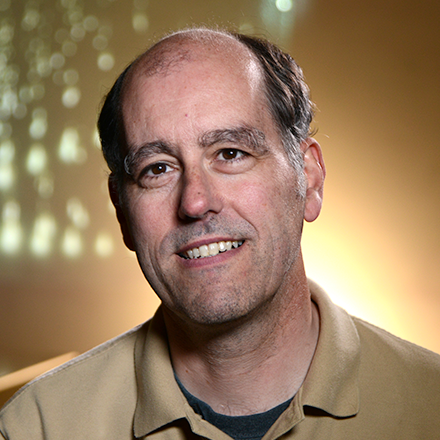
Peter Jenniskens
How the comet crumbles
Description: Dr Peter Jenniskens uses meteors as a tool in astronomy. He is conducting a surveillance of the night sky to map our meteor showers in order to understand which comets and primitive asteroids are responsible for them (http://cams.seti.org). Part of this program is the production of lightcurves (a plot of how the brightness changes with time).
Comets release meteoroids that have different physical strength. Some break readily when impacting the Earth's atmosphere and produce a short meteor with an irregular lightcurve. Others break more gradually, producing a long meteor with a featureless lightcurve peaking towards the end. Between these extremes, a wide variety of lightcurve shapes are observed. Using an existing database of over 300,000 video-derived lightcurves from meteors that belong to one of tens of known meteor showers, as well as the sporadic background, the student will investigate how meteoroids differ from one parent comet to another.
How the comet crumbles
Description: Dr Peter Jenniskens uses meteors as a tool in astronomy. He is conducting a surveillance of the night sky to map our meteor showers in order to understand which comets and primitive asteroids are responsible for them (http://cams.seti.org). Part of this program is the production of lightcurves (a plot of how the brightness changes with time).
Comets release meteoroids that have different physical strength. Some break readily when impacting the Earth's atmosphere and produce a short meteor with an irregular lightcurve. Others break more gradually, producing a long meteor with a featureless lightcurve peaking towards the end. Between these extremes, a wide variety of lightcurve shapes are observed. Using an existing database of over 300,000 video-derived lightcurves from meteors that belong to one of tens of known meteor showers, as well as the sporadic background, the student will investigate how meteoroids differ from one parent comet to another.
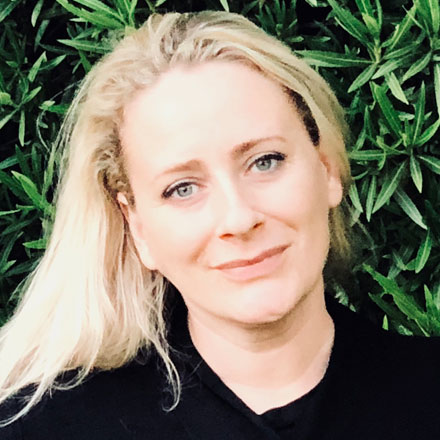
Kathryn Bywaters
New flight hardware for monitoring microbial growth
Description: Dr Kathryn Bywaters’ research focuses on the growth of microorganisms in a space environment, as well as astrobiology-related issues.
With a renewed desire to return to the Moon, NASA’s Artemis lunar exploration program seeks to establish sustainable missions by 2028. As a result, the Commercial Lunar Payload Services (CLPS) will provide landing service to deliver science and technology payloads to the lunar surface. One strategic knowledge gap (III-J-30) that will need to be addressed, to enable sustainable missions, is semi-closed life support systems. Technology development of bioregenerative life support efforts using algae/plants for oxygen, water, and food production, if successful, would enable semi-closed life support systems. However, more information is needed on the effects of microgravity on microorganisms before bioregenerative life support can become a reliable life support tool.
New flight hardware for monitoring microbial growth
Description: Dr Kathryn Bywaters’ research focuses on the growth of microorganisms in a space environment, as well as astrobiology-related issues.
With a renewed desire to return to the Moon, NASA’s Artemis lunar exploration program seeks to establish sustainable missions by 2028. As a result, the Commercial Lunar Payload Services (CLPS) will provide landing service to deliver science and technology payloads to the lunar surface. One strategic knowledge gap (III-J-30) that will need to be addressed, to enable sustainable missions, is semi-closed life support systems. Technology development of bioregenerative life support efforts using algae/plants for oxygen, water, and food production, if successful, would enable semi-closed life support systems. However, more information is needed on the effects of microgravity on microorganisms before bioregenerative life support can become a reliable life support tool.
The student will work on a project focused on integrating existing flight hardware to create a habitat capable of monitor microbial growth. This habitat will then go on to be proposed as a CLPS payload. The student will study algae in the laboratory in order to determine growth rates and morphological changes through microscopy images.
Qualifications: Some biology or chemistry lab experience is preferred. In addition, it is helpful but not required if the student has experience with computer-aided design software, such as SolidWorks.
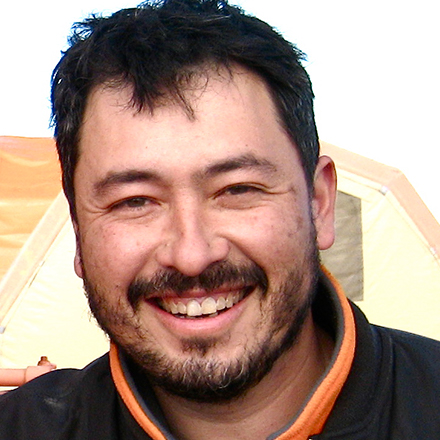
Pascal Lee
Pits and caves on the Moon and Mars: Science potential and significance for astrobiology and human exploration
Description: Dr Pascal Lee studies the history of water on planetary bodies and helps plan the future human exploration of the Moon and Mars. Dr Lee has led over 30 expeditions to the Arctic and Antarctica, and also field research in Iceland, to study the Moon and Mars by comparison with the Earth. He also studies asteroids and the two moons of Mars. His first book, Mission: Mars, won the 2015 Prize for Excellence in Children’s Science Books from the American Association for the Advancement of Science.
Several hundred pits have been identified on the Moon and Mars, each representing potential access points to subsurface cavities with environmental conditions radically different from those prevailing at the surface. In some locations on the Moon and Mars, caves might harbor ice, which would be of major significance for planetary evolution, astrobiology, and human exploration.
The student will work with Dr Lee at the SETI Institute to help characterize known pits and caves on the Moon and Mars, modeling environmental conditions in them. The student will also help search for undiscovered pits, and examine how the exploration of pits on the Moon might be carried out in the context of NASA’s Artemis Program.
Pits and caves on the Moon and Mars: Science potential and significance for astrobiology and human exploration
Description: Dr Pascal Lee studies the history of water on planetary bodies and helps plan the future human exploration of the Moon and Mars. Dr Lee has led over 30 expeditions to the Arctic and Antarctica, and also field research in Iceland, to study the Moon and Mars by comparison with the Earth. He also studies asteroids and the two moons of Mars. His first book, Mission: Mars, won the 2015 Prize for Excellence in Children’s Science Books from the American Association for the Advancement of Science.
Several hundred pits have been identified on the Moon and Mars, each representing potential access points to subsurface cavities with environmental conditions radically different from those prevailing at the surface. In some locations on the Moon and Mars, caves might harbor ice, which would be of major significance for planetary evolution, astrobiology, and human exploration.
The student will work with Dr Lee at the SETI Institute to help characterize known pits and caves on the Moon and Mars, modeling environmental conditions in them. The student will also help search for undiscovered pits, and examine how the exploration of pits on the Moon might be carried out in the context of NASA’s Artemis Program.
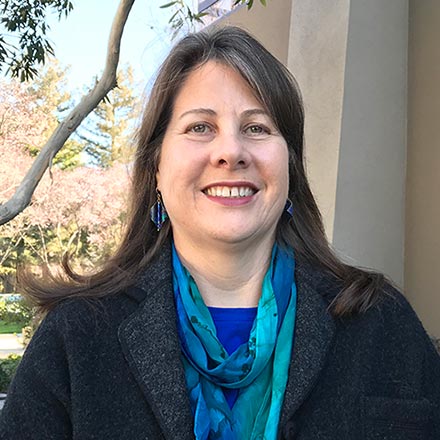
Janice Bishop
Remote detection of aqueous minerals on Mars as indicators of the geochemical environment
Description: Dr Janice Bishop’s research involves characterizing the surface of Mars using hyperspectral visible/near-infrared (VNIR) images of Mars collected by the CRISM spectrometer on MRO (http://crism.jhuapl.edu). We are interested in studying the early martian environment through detection of phyllosilicates, sulfates, and other aqueous minerals on the surface of Mars.
Dr Bishop is seeking a summer intern to study regions of Mars including Valles Marineris and Mawrth Vallis. We will be working together to investigate these regions using CRISM images with the goal to document the mineralogy of aqueous outcrops. In particular, we will be characterizing sites where phyllosilicates and sulfates are associated in the light-toned outcrops. The student will learn how to collect spectra from CRISM images and compare these with lab spectra of minerals. We will also measure spectra in the lab of Mars analog rocks and relate these to CRISM spectra of Mars. The student will master how to measure spectra of geologic samples, how to use several image processing techniques, and how to identify different materials based on spectral features (e.g. clays, sulfates, basalt).
Qualifications: The ideal candidate would have at least one year each of chemistry, physics, geology, and mineralogy. Experience measuring the spectral properties of rocks and/or using CRISM spectra of Mars is a plus. This project is suitable for a student interested in mineralogy, remote sensing, or planetary geology.
Location: The student will work at the SETI Institute with Dr Bishop.
Remote detection of aqueous minerals on Mars as indicators of the geochemical environment
Description: Dr Janice Bishop’s research involves characterizing the surface of Mars using hyperspectral visible/near-infrared (VNIR) images of Mars collected by the CRISM spectrometer on MRO (http://crism.jhuapl.edu). We are interested in studying the early martian environment through detection of phyllosilicates, sulfates, and other aqueous minerals on the surface of Mars.
Dr Bishop is seeking a summer intern to study regions of Mars including Valles Marineris and Mawrth Vallis. We will be working together to investigate these regions using CRISM images with the goal to document the mineralogy of aqueous outcrops. In particular, we will be characterizing sites where phyllosilicates and sulfates are associated in the light-toned outcrops. The student will learn how to collect spectra from CRISM images and compare these with lab spectra of minerals. We will also measure spectra in the lab of Mars analog rocks and relate these to CRISM spectra of Mars. The student will master how to measure spectra of geologic samples, how to use several image processing techniques, and how to identify different materials based on spectral features (e.g. clays, sulfates, basalt).
Qualifications: The ideal candidate would have at least one year each of chemistry, physics, geology, and mineralogy. Experience measuring the spectral properties of rocks and/or using CRISM spectra of Mars is a plus. This project is suitable for a student interested in mineralogy, remote sensing, or planetary geology.
Location: The student will work at the SETI Institute with Dr Bishop.
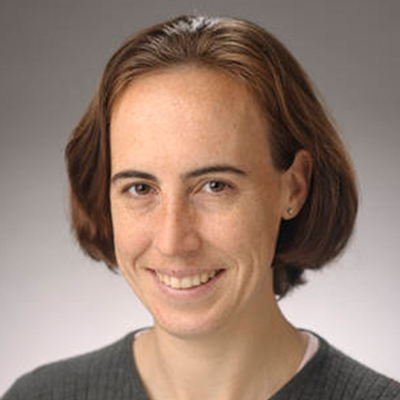
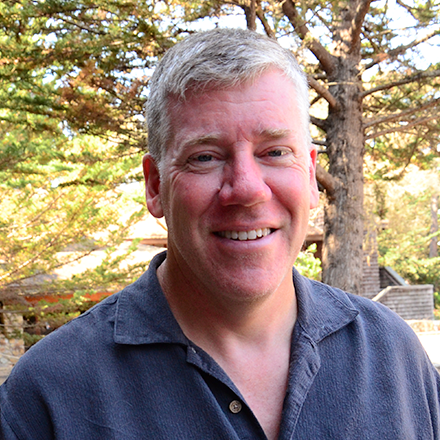
Ann Marie Cody and Doug Caldwell
Finding the youngest stars in the sky with TESS data
Description: Dr Ann Marie Cody and Dr Doug Caldwell use space telescope data to detect exoplanets and study their origins around young stars. The Transiting Exoplanet Survey Satellite (TESS) is currently monitoring the brightness of hundreds of thousands of stars across the sky, on 30-minute timescales. The resulting profile of brightness with time is called a “lightcurve.” Some of these stars are young enough that they are still encircled by the gas and dust of their formation and may be actively forming planets. This gas and dust, in turn, causes prominent lightcurve variations. The goal of our project is to identify all of the bright, young stars in TESS’s field of view via their variability. By identifying many stars that were not previously known to be young, we will obtain better statistics on the range of conditions under which stellar and planetary systems form.
Using a collection of TESS lightcurves for stars that are known to be young, the REU intern will work to identify common patterns among them. They will then use those characteristics to perform a search for additional young stars across the sky in the larger TESS dataset. This search will involve statistical metrics and potentially basic machine learning methods. Upon completing the search, the student will examine the resulting set of lightcurves for signs of gas accretion and circumstellar dust obscuration, identifying the most promising candidates for follow-up star and planet formation studies.
Qualifications: Python programming skills are recommended. Basic machine learning experience is helpful but not required; student should be willing to learn more about machine learning during the internship.
Finding the youngest stars in the sky with TESS data
Description: Dr Ann Marie Cody and Dr Doug Caldwell use space telescope data to detect exoplanets and study their origins around young stars. The Transiting Exoplanet Survey Satellite (TESS) is currently monitoring the brightness of hundreds of thousands of stars across the sky, on 30-minute timescales. The resulting profile of brightness with time is called a “lightcurve.” Some of these stars are young enough that they are still encircled by the gas and dust of their formation and may be actively forming planets. This gas and dust, in turn, causes prominent lightcurve variations. The goal of our project is to identify all of the bright, young stars in TESS’s field of view via their variability. By identifying many stars that were not previously known to be young, we will obtain better statistics on the range of conditions under which stellar and planetary systems form.
Using a collection of TESS lightcurves for stars that are known to be young, the REU intern will work to identify common patterns among them. They will then use those characteristics to perform a search for additional young stars across the sky in the larger TESS dataset. This search will involve statistical metrics and potentially basic machine learning methods. Upon completing the search, the student will examine the resulting set of lightcurves for signs of gas accretion and circumstellar dust obscuration, identifying the most promising candidates for follow-up star and planet formation studies.
Qualifications: Python programming skills are recommended. Basic machine learning experience is helpful but not required; student should be willing to learn more about machine learning during the internship.
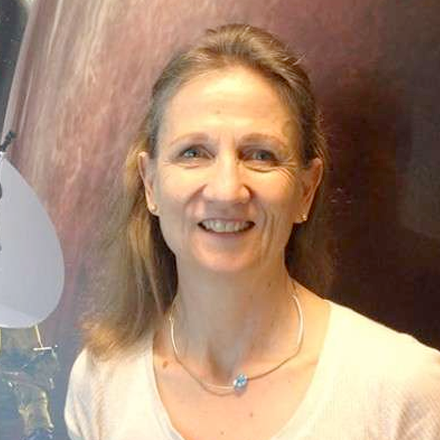
Cristina Dalle Ore
A study of ice on Rhea as a tool to measure the age of Saturn’s icy satellites
Description: Dr Cristina Dalle Ore uses data from the Cassini and New Horizons missions to study the physical characteristics of icy surfaces. These include composition, temperature, ice phase, and structure – important parameters that ultimately tell us the story of the surface itself. One of the projects that she is working on now involves the study of ice phase in and around craters on the satellites of Saturn. She maps the shape of the 2-micron H2O ice band in the observed spectra collected around craters. Distortions in the shape of the band are telltales of variations in ice phase. Since craters are the result of collisions with sizeable objects it is assumed that the collision itself would raise the temperature in the area causing the ice to first melt and then freeze in crystalline form. H2O ice changes phase from crystalline to amorphous with time as a result of bombardment from micrometeorites and general radiation processing. The relative amount of one phase versus the other can give us clues on how old the crater is. Generally, craters are used as yardsticks to measure a surface age, the larger the number of craters the older the surface. Therefore, the aim is to use ice phase as an alternative measure of age, which could then be compared to crater counts and provide validation to the very widely used crater counting technique.
Qualifications: Some computer experience is recommended.
A study of ice on Rhea as a tool to measure the age of Saturn’s icy satellites
Description: Dr Cristina Dalle Ore uses data from the Cassini and New Horizons missions to study the physical characteristics of icy surfaces. These include composition, temperature, ice phase, and structure – important parameters that ultimately tell us the story of the surface itself. One of the projects that she is working on now involves the study of ice phase in and around craters on the satellites of Saturn. She maps the shape of the 2-micron H2O ice band in the observed spectra collected around craters. Distortions in the shape of the band are telltales of variations in ice phase. Since craters are the result of collisions with sizeable objects it is assumed that the collision itself would raise the temperature in the area causing the ice to first melt and then freeze in crystalline form. H2O ice changes phase from crystalline to amorphous with time as a result of bombardment from micrometeorites and general radiation processing. The relative amount of one phase versus the other can give us clues on how old the crater is. Generally, craters are used as yardsticks to measure a surface age, the larger the number of craters the older the surface. Therefore, the aim is to use ice phase as an alternative measure of age, which could then be compared to crater counts and provide validation to the very widely used crater counting technique.
Qualifications: Some computer experience is recommended.
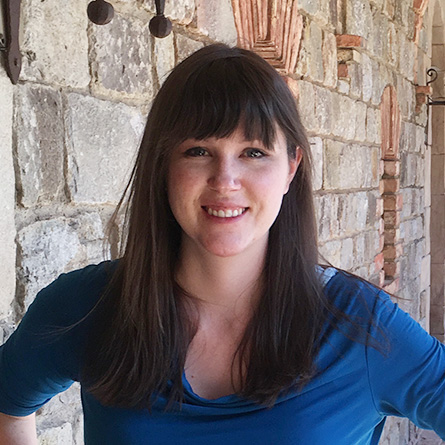
Chloe Beddingfield
Thermal properties of Saturn’s moon Rhea
Description: Dr Chloe Beddingfield studies planetary tectonics, geodynamics, and geomorphology. She is interested in how the surfaces and interiors of icy and rocky planetary bodies evolved. She uses processing techniques to enhance available spacecraft images and derive digital elevation models of surfaces to carry out her research. Planetary surfaces vary widely across the Solar System and often exhibit bizarre and unique features. These surface “clues” can be used to gain insight into subsurface activity, structure, and thermal properties of planetary bodies.
The REU student would work to investigate the geology of Saturn’s moon Rhea. The project would involve analyzing the topography of large tectonic features from digital elevation models in order to estimate thermal properties of Rhea’s lithosphere. Results from geophysical calculations would be compared to hypothetical heat flux values produced from likely energy sources for Rhea such as orbital resonance activity and isotopic heating.
Qualifications: Some experience with GIS software is recommended. A geology or physics background is preferred.
Thermal properties of Saturn’s moon Rhea
Description: Dr Chloe Beddingfield studies planetary tectonics, geodynamics, and geomorphology. She is interested in how the surfaces and interiors of icy and rocky planetary bodies evolved. She uses processing techniques to enhance available spacecraft images and derive digital elevation models of surfaces to carry out her research. Planetary surfaces vary widely across the Solar System and often exhibit bizarre and unique features. These surface “clues” can be used to gain insight into subsurface activity, structure, and thermal properties of planetary bodies.
The REU student would work to investigate the geology of Saturn’s moon Rhea. The project would involve analyzing the topography of large tectonic features from digital elevation models in order to estimate thermal properties of Rhea’s lithosphere. Results from geophysical calculations would be compared to hypothetical heat flux values produced from likely energy sources for Rhea such as orbital resonance activity and isotopic heating.
Qualifications: Some experience with GIS software is recommended. A geology or physics background is preferred.
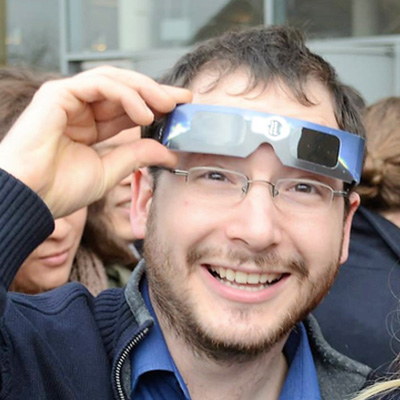

Alex Pollak and Andrew Siemion
Instrumentation development for radio technosignature searches at the ATA
Description: To be announced...
Instrumentation development for radio technosignature searches at the ATA
Description: To be announced...
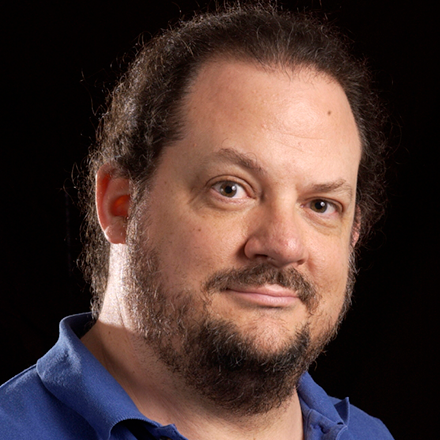
David Summers
Biosignature detection
Description: Dr Dave Summers investigates a wide range of chemical reactions that are either needed for life to begin, that may affect whether life can exist, or that might be used by scientists to recognize life elsewhere.
We are currently studying the detection of biomarkers - organic compounds that represent biosignatures of life - in mineral samples. We study where they can be found, how they can be found, and why they are there. This is so we can better search for biosignatures when we look for life on Mars. This project, in collaboration with other members of the SETI Institute’s team in the NASA Astrobiology Institute, will use IR microscope methods to detect and characterize organic samples that have been obtained from the Atacama desert.
Qualifications: Some biology or chemistry lab experience is preferred.
Biosignature detection
Description: Dr Dave Summers investigates a wide range of chemical reactions that are either needed for life to begin, that may affect whether life can exist, or that might be used by scientists to recognize life elsewhere.
We are currently studying the detection of biomarkers - organic compounds that represent biosignatures of life - in mineral samples. We study where they can be found, how they can be found, and why they are there. This is so we can better search for biosignatures when we look for life on Mars. This project, in collaboration with other members of the SETI Institute’s team in the NASA Astrobiology Institute, will use IR microscope methods to detect and characterize organic samples that have been obtained from the Atacama desert.
Qualifications: Some biology or chemistry lab experience is preferred.
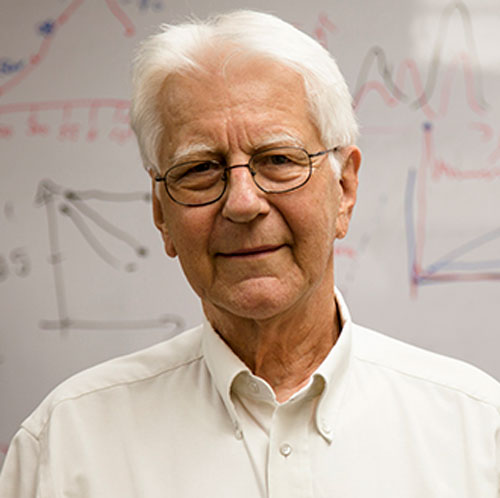
Friedemann Freund
Electrostatic charging of dust
Description: Dr Friedemann Freund doesn’t shrink from taking on the really big problems. He performs laboratory experiments relevant to topics including oxygen in the ancient atmosphere, electromagnetic methods of earthquake prediction, and the spread of life through the solar system.
Electrostatic charging is familiar to all of us. All non-conducting materials have the tendency to become electrostatically charged when touched or rubbed. This is evident in powdered materials, which can become charged to the point of producing sparks. The mechanism is still poorly understood. This REU Summer Project aims at unraveling some of the mysteries surrounding electrostatic charging that develops when grains are moved by winds, such as dust on Mars, or hit by hard UV such as the regolith on the Moon. All these powders become electrostatically charged. On the Moon electrostatic charging has been observed by the Apollo astronauts when the UV of the sun hits the regolith after a long lunar night.
Question: what is the mechanism behind electrostatic charging? Experimentally, fine glass beads will be tumbled in closed glass jars. The working hypothesis is: (i) the surface of the glass beads is hydroxylated; (ii) at points of contact a redox conversion takes place between hydroxyl pairs; (iii) hydroxyl protons take over an electron from their oxygens, reducing to H2, while the oxygens oxidize from O2– to O–, forming a peroxy bond, (iv) this bond breaks as the surfaces of the glass beads separate, generating an electron e’ and hole h•, with h• chemically equivalent to O– in a matrix of O(2–), (v) while the electron stays put at the point of separation, the hole is a highly mobile electronic charge carrier, building up electrostatic potentials.
The project involves recording changes in the electric potential and resistance during tumbling under different relative humidity conditions. It includes measurements of the visible light and radio frequency emission due to tiny corona discharges between glass beads. The project will attempt to also detect the spectroscopically distinct infrared emission during recombination of holes to peroxy. If successful, it could lay the basis for the remote detection of this process on the Moon and on Mars.
Electrostatic charging of dust
Description: Dr Friedemann Freund doesn’t shrink from taking on the really big problems. He performs laboratory experiments relevant to topics including oxygen in the ancient atmosphere, electromagnetic methods of earthquake prediction, and the spread of life through the solar system.
Electrostatic charging is familiar to all of us. All non-conducting materials have the tendency to become electrostatically charged when touched or rubbed. This is evident in powdered materials, which can become charged to the point of producing sparks. The mechanism is still poorly understood. This REU Summer Project aims at unraveling some of the mysteries surrounding electrostatic charging that develops when grains are moved by winds, such as dust on Mars, or hit by hard UV such as the regolith on the Moon. All these powders become electrostatically charged. On the Moon electrostatic charging has been observed by the Apollo astronauts when the UV of the sun hits the regolith after a long lunar night.
Question: what is the mechanism behind electrostatic charging? Experimentally, fine glass beads will be tumbled in closed glass jars. The working hypothesis is: (i) the surface of the glass beads is hydroxylated; (ii) at points of contact a redox conversion takes place between hydroxyl pairs; (iii) hydroxyl protons take over an electron from their oxygens, reducing to H2, while the oxygens oxidize from O2– to O–, forming a peroxy bond, (iv) this bond breaks as the surfaces of the glass beads separate, generating an electron e’ and hole h•, with h• chemically equivalent to O– in a matrix of O(2–), (v) while the electron stays put at the point of separation, the hole is a highly mobile electronic charge carrier, building up electrostatic potentials.
The project involves recording changes in the electric potential and resistance during tumbling under different relative humidity conditions. It includes measurements of the visible light and radio frequency emission due to tiny corona discharges between glass beads. The project will attempt to also detect the spectroscopically distinct infrared emission during recombination of holes to peroxy. If successful, it could lay the basis for the remote detection of this process on the Moon and on Mars.
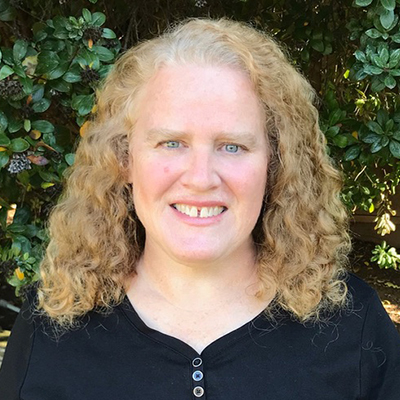
Virginia Gulick
Fluvial and hydrothermal studies of the surface of Mars
Description: Dr Ginny Gulick examines erosional features on Mars, looking for the tell-tale signs of running water in Mars’ geological history. Some of the meandering valley networks that lace the landscape may indicate that Mars was a warmer, wetter world billions of years ago. But other features, including gullies found around many impact craters and valley walls, may be evidence of water that flowed on the martian surface more recently.
Dr Gulick uses stereo images and Digital Terrain Models (DTMs) from Mars-orbiting cameras including HiRISE, CTX, and HRSC to look for features caused by flowing water (“fluvial” features) or by heated groundwater (“hydrothermal” features). The current project is focused on understanding gully formation in Mars’ more recent geological history, by studying their 3D slope morphology, their spatially association landforms, and their topographic and environmental settings. However, we are also interested in understanding the formational environments of channels, valleys, and paleolakes throughout Mars’s geological history. We will use information from terrestrial analog sites, hydrologic models, and DTMs to estimate water discharges, volumes, and erosion rates to better understand the implications for paleoclimatic change. Opportunities are also available for HiRISE science operations support, including help with science planning and targeting, and analysis of acquired data.
Qualifications: Students with a geology, geography, or hydrology background with an emphasis in geomorphology and experience with computer software ArcGIS and/or ENVI are strongly desired. Experience with Python and/or MatLab preferred.
Fluvial and hydrothermal studies of the surface of Mars
Description: Dr Ginny Gulick examines erosional features on Mars, looking for the tell-tale signs of running water in Mars’ geological history. Some of the meandering valley networks that lace the landscape may indicate that Mars was a warmer, wetter world billions of years ago. But other features, including gullies found around many impact craters and valley walls, may be evidence of water that flowed on the martian surface more recently.
Dr Gulick uses stereo images and Digital Terrain Models (DTMs) from Mars-orbiting cameras including HiRISE, CTX, and HRSC to look for features caused by flowing water (“fluvial” features) or by heated groundwater (“hydrothermal” features). The current project is focused on understanding gully formation in Mars’ more recent geological history, by studying their 3D slope morphology, their spatially association landforms, and their topographic and environmental settings. However, we are also interested in understanding the formational environments of channels, valleys, and paleolakes throughout Mars’s geological history. We will use information from terrestrial analog sites, hydrologic models, and DTMs to estimate water discharges, volumes, and erosion rates to better understand the implications for paleoclimatic change. Opportunities are also available for HiRISE science operations support, including help with science planning and targeting, and analysis of acquired data.
Qualifications: Students with a geology, geography, or hydrology background with an emphasis in geomorphology and experience with computer software ArcGIS and/or ENVI are strongly desired. Experience with Python and/or MatLab preferred.

Matthew Tiscareno
Mesoscale structures in Saturn's rings
Description: Dr Matt Tiscareno studies Saturn’s rings using high-resolution images that were taken by the orbiting Cassini spacecraft between 2004 and 2017. Among its many discoveries, Cassini revealed an unanticipated new class of structure within the rings. We say “mesoscale,” which simply means “medium-sized,” because these structures are larger than individual ring particles but smaller than the waves and other concentric features that you usually see in ring images. The mesoscale structure, which usually takes the form of clumps or streaks, looks different at different locations within the rings. In fact, it sometimes looks markedly different in regions that are right next to each other, and we don’t know why. Understanding the mesoscale structure will probably help us to understand how Saturn’s rings evolved to their present state, how they currently operate at the particle level, and what they can tell us about other types of disks such as baby solar systems.
In this project Dr Tiscareno is working with colleagues at another institution who use Cassini’s high-speed UV photometer to measure the brightness of a star as it passed behind the semi-transparent rings (this is called an “occultation”). In order to combine the imaging data and the occultation data in a powerful way, the REU student will search through the data set to identify images that were taken at the same time as an occultation, or images that give the best views of mesoscale structures in each region that was separately probed by an occultation. The student will then use analysis tools to characterize the identified images and work with the team to interpret them.
Qualifications: The student should have some familiarity with computer programming. The language doesn’t matter, because it’s the general principles of programming that are important. I will consider students who are new to programming if they commit to taking a programming class during the spring semester, in which case I recommend the Python language. The student should have a love for physics, and be interested in the physics of orbits (because every ring particle is on its own orbit around Saturn!). Experience with orbital physics is helpful but not required.
Mesoscale structures in Saturn's rings
Description: Dr Matt Tiscareno studies Saturn’s rings using high-resolution images that were taken by the orbiting Cassini spacecraft between 2004 and 2017. Among its many discoveries, Cassini revealed an unanticipated new class of structure within the rings. We say “mesoscale,” which simply means “medium-sized,” because these structures are larger than individual ring particles but smaller than the waves and other concentric features that you usually see in ring images. The mesoscale structure, which usually takes the form of clumps or streaks, looks different at different locations within the rings. In fact, it sometimes looks markedly different in regions that are right next to each other, and we don’t know why. Understanding the mesoscale structure will probably help us to understand how Saturn’s rings evolved to their present state, how they currently operate at the particle level, and what they can tell us about other types of disks such as baby solar systems.
In this project Dr Tiscareno is working with colleagues at another institution who use Cassini’s high-speed UV photometer to measure the brightness of a star as it passed behind the semi-transparent rings (this is called an “occultation”). In order to combine the imaging data and the occultation data in a powerful way, the REU student will search through the data set to identify images that were taken at the same time as an occultation, or images that give the best views of mesoscale structures in each region that was separately probed by an occultation. The student will then use analysis tools to characterize the identified images and work with the team to interpret them.
Qualifications: The student should have some familiarity with computer programming. The language doesn’t matter, because it’s the general principles of programming that are important. I will consider students who are new to programming if they commit to taking a programming class during the spring semester, in which case I recommend the Python language. The student should have a love for physics, and be interested in the physics of orbits (because every ring particle is on its own orbit around Saturn!). Experience with orbital physics is helpful but not required.
